I used this AI-powered workout app for an entire year – here’s 5 things I learned
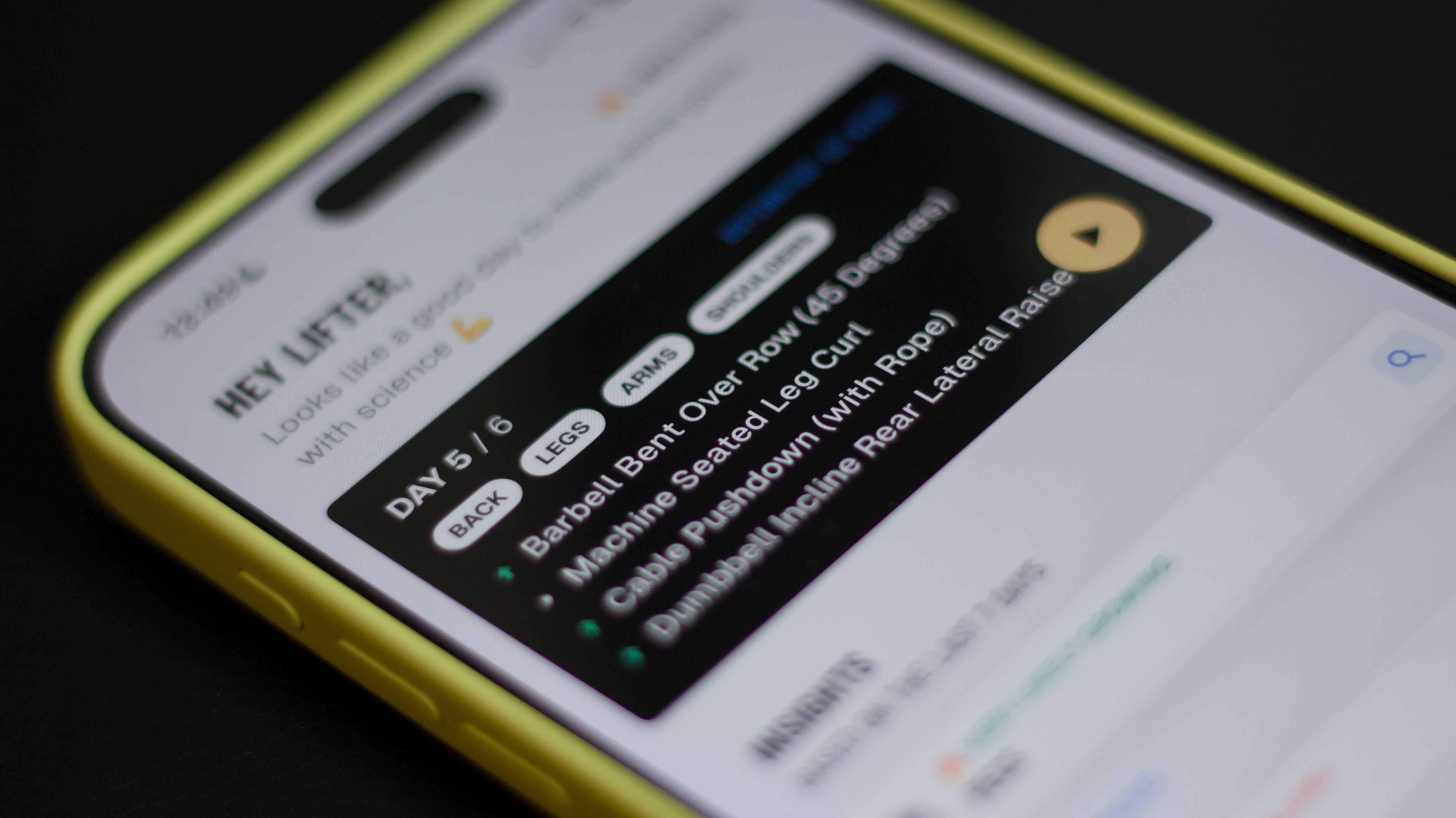
As more and more companies scramble to jam artificial intelligence into literally everything, I find myself becoming increasingly desensitized to the prospect of using AI for really anything. I loathe the anti-creative powers of generative AI for text and image creation, and I’m so over products carrying AI branding for no reason (I’m looking at you, Samsung Family Hub AI Vision fridge).
As a serial gym goer, however, there’s one area of my life where AI has proven indispensable for more than a year, and that’s in powering my workouts. Last year, I was introduced to PUSH, an AI-powered workout app and gym tracker designed to help you build muscle as quickly as possible by taking a scientific approach to workout creation.
Give or take a couple of injuries and some holidays, I’ve used PUSH six days a week, every week, for over a year. I’ve done hundreds of workouts, and in that time I’ve learned more about exercise than all my previous years of experience attending the gym. It’s definitely one of the best fitness apps I’ve ever used.
PUSH is a delight to use, it’s got a great interface that’s very easy to use, rest counters, custom workout plans, and more. Yet more valuable than the joy I’ve had using the app, PUSH has taught me some invaluable lessons about building muscle in the gym I can’t wait to share with you. Here’s everything I’ve learned.
Progressive overload really matters

If you’re new to the gym or building muscle, you might have heard the term ‘progressive overload’ bandied around. Even as a long-time gym goer, I was familiar with the concept, but until I started using PUSH, I’d never really taken it seriously.
PUSH is hyper-tuned to help you gradually increase the amount of weight you’re lifting over time, a tried and tested vehicle for building muscle. I’d spent years bench pressing maybe 70 or 80kgs (175lbs-ish), occasionally pushing the boat out to 85kgs if I was feeling sprightly.
PUSH has helped me elevate my bench press to a consistent 100kgs for multiple sets of five in less than 12 months. Across the board, all of my movements and lifts have increased in power and weight because PUSH doesn’t let you take your foot off the gas. As soon as you can achieve the desired number of reps at a certain weight, PUSH uses its AI algorithm to calculate your next increment. If you fail a set or can’t see a certain weight through to completion, it’ll automatically calculate a plateau-breaker exercise, usually an increased weight for fewer reps, to help you smash through your next barrier.
Sign up for breaking news, reviews, opinion, top tech deals, and more.
With PUSH in my pocket, I’m no longer guessing weights for workouts, or retreading ground. I’m just making clear consistent progress week-in, week-out.
It’s time to ditch the Bro Split

Most people tend to split their gym program up into body parts. Chest on Monday, back on Tuesday, then legs, shoulders, arms, etc… in gym circles, this is known as the “Bro Split”. If it works for you then that’s fine, but PUSH’s tailor-made program uses AI and peer-reviewed scientific research to calculate a plan that lets you train your entire body in an optimal cycle.
For instance, on some days, I train back, legs, arms, and shoulders, all at once. It took some getting used to – doing lateral pulldowns right after squats isn’t fun – but by carefully training muscles in a more target way, rather than just blasting chest on a Monday once a week and so on, I’ve noticed a much more consistent and manageable progression in my strength and improved recovery. You can opt for a push, pull, leg split in the PUSH app if you so desire, but I’ve put my faith in the AI algorithm and its unconventional muscle groupings, and I’ll never go back.
Rest is important
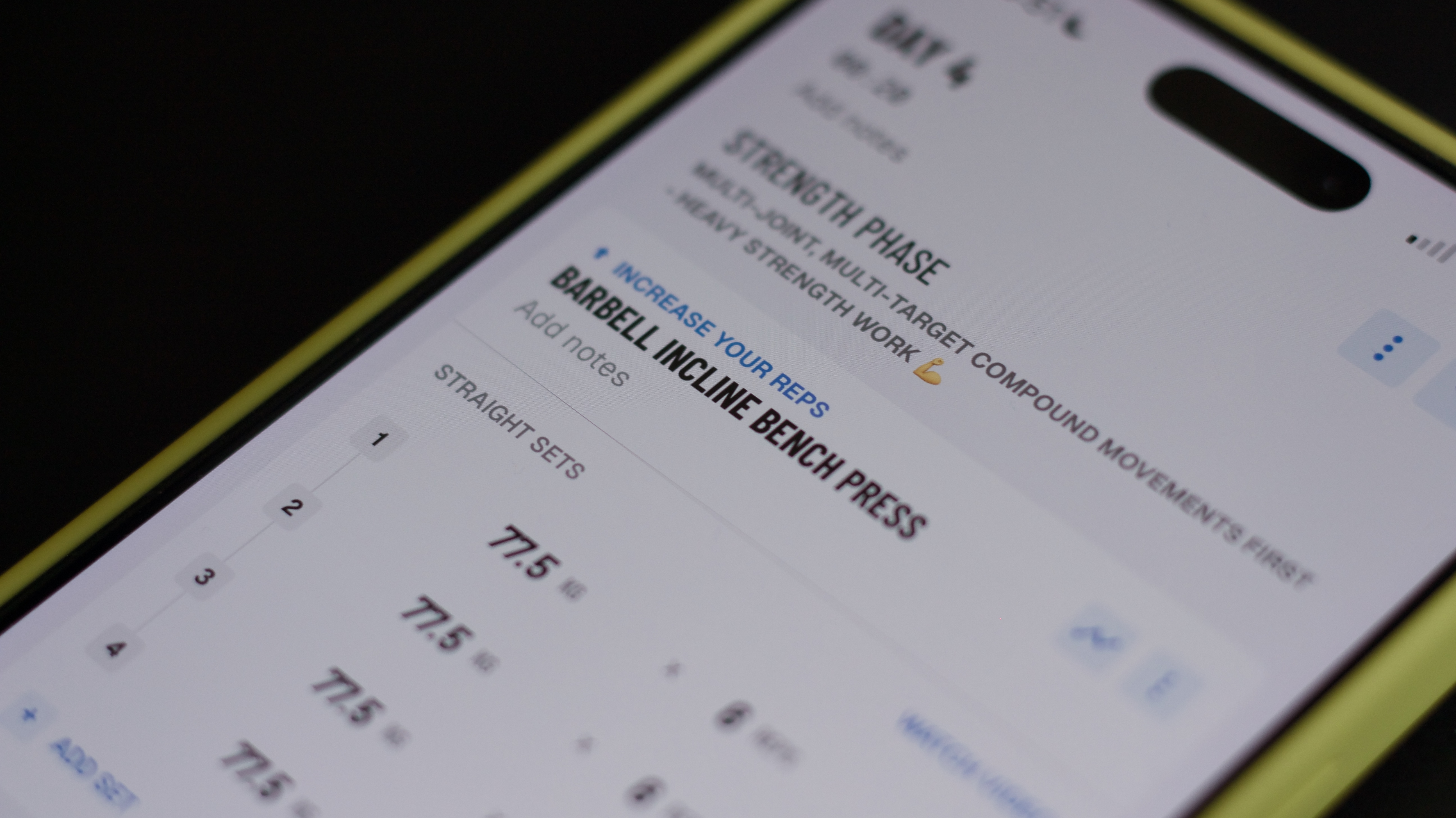
While the aforementioned muscle groupings help with longer-term fatigue over the weeks and months, PUSH also comes with a built-in rest timer for use between sets. I probably spent six years in the gym just guessing at how long I was taking between sets, choosing when to start my next exercise based purely on vibes and whether or not I’d finished cruising Instagram.
PUSH’s regimented rest timer, which varies depending on the type of exercise you’re doing, has shown me the importance of training to a precise period of rest. Too little time between sets, and your muscles won’t have recovered, leaving you unable to push as much as you need. Too long, and you won’t be fatiguing your muscles enough to make any progress.
Again, PUSH uses AI to determine what constitutes an ideal rest time but gives you the final say in how long you take, letting you tweak rest periods slightly based on how you’re feeling. With set rest times between exercises, I’ve massively improved the progress I make in the gym, all while reducing how long I actually spend in the gym.
Growth takes time
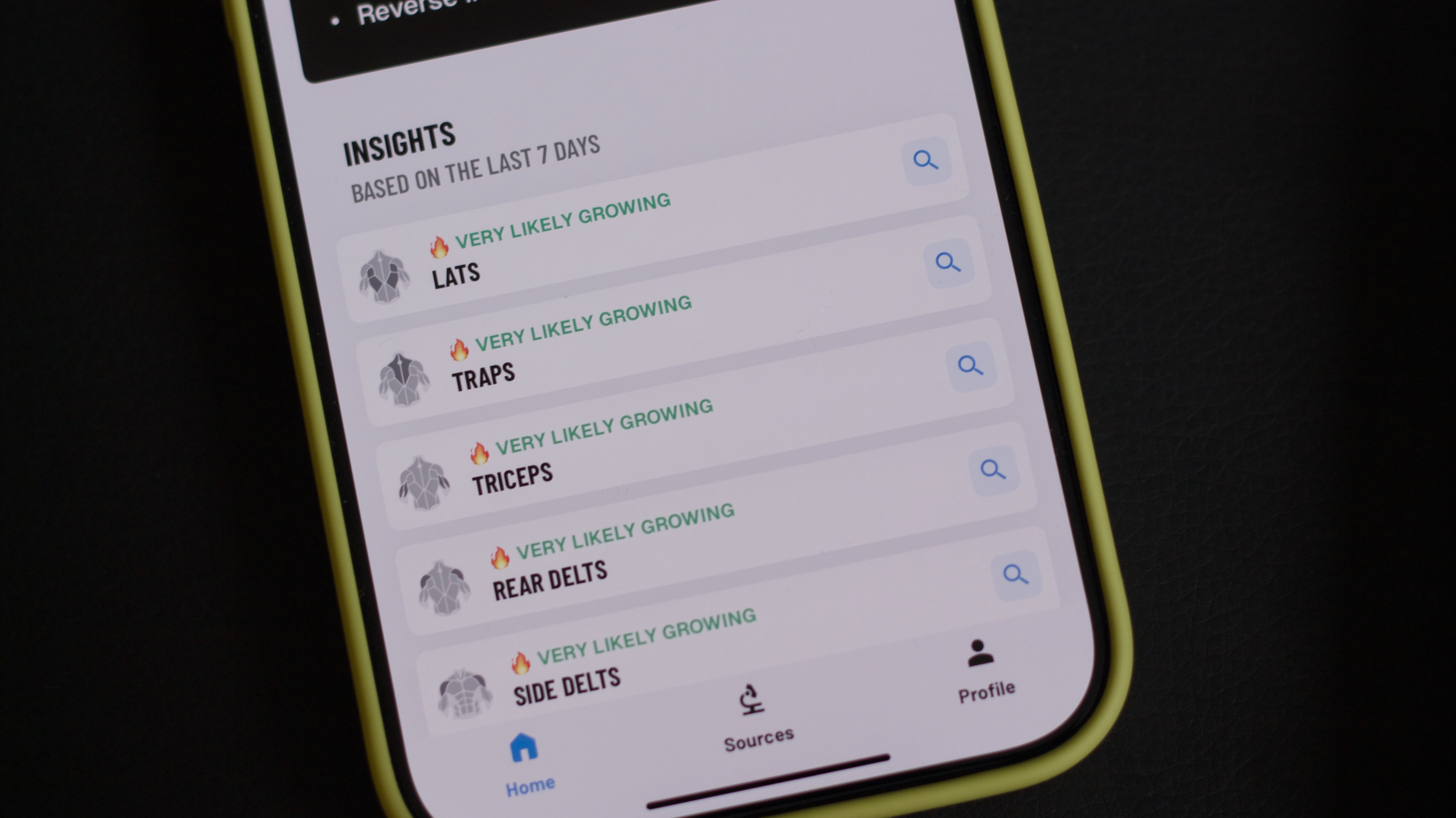
We live in a world of instant gratification, but PUSH has helped me understand that growing and building muscle takes time and commitment. Having an app show me my progress week-by-week has been vital in keeping me motivated, even when the results aren’t physically obvious or immediate.
Seeing consistent strength gains each time I return to the gym is a terrific motivator, and has helped me to take my eyes off trying to make big jumps in performance or expecting huge changes in my physique. What’s more, knowing you’re on a steady upward trajectory takes ego lifting and overexerting yourself out of the equation, with measured increases drastically reducing the chances of injury, and of course embarrassment.
Investing in a program is worth it
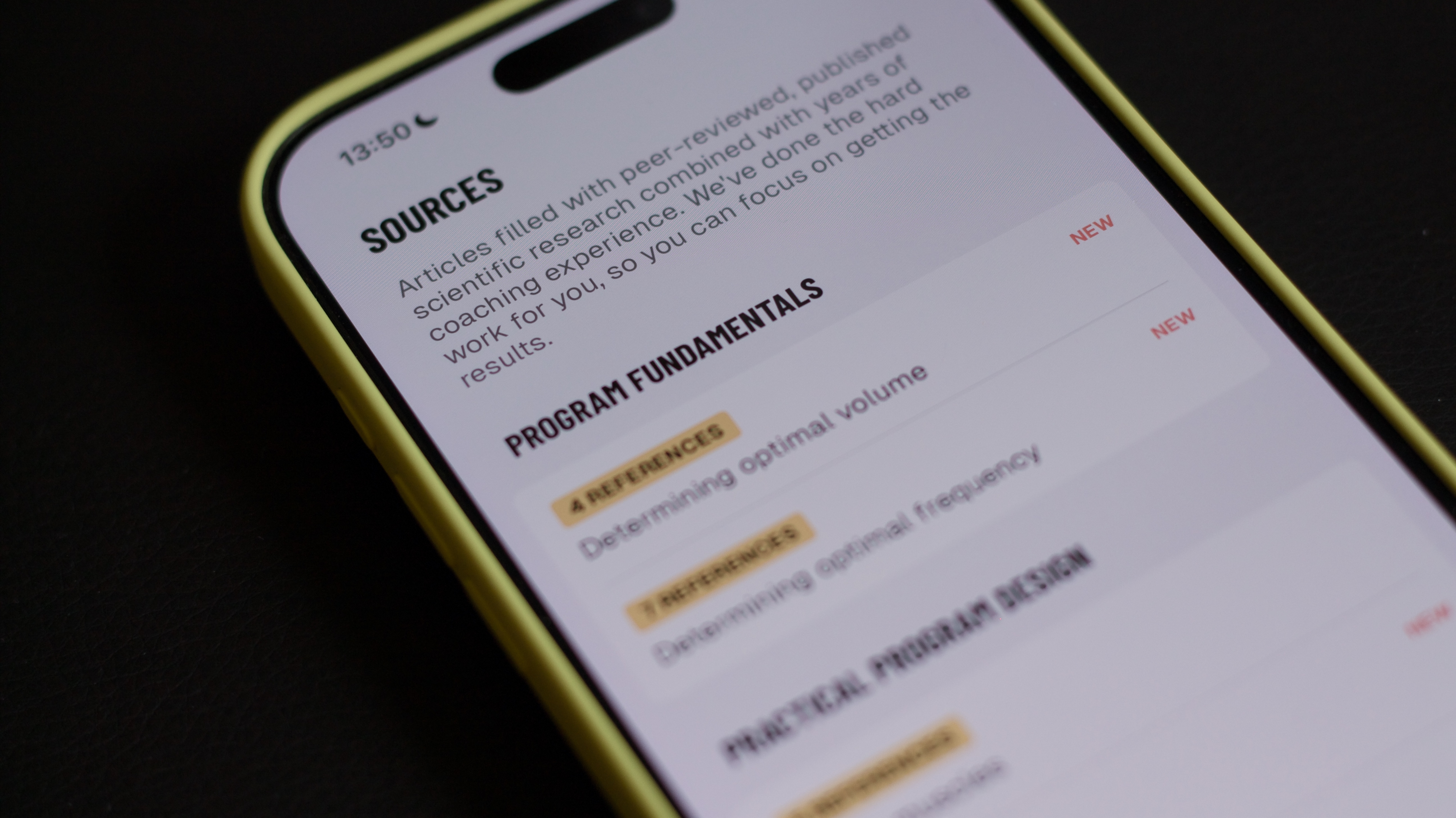
I pay £15.99 ($21 / AU$23.49) a month for the privilege of using PUSH. That’s a lot of money for a monthly subscription app, but for me the investment is priceless. I’m convinced that with PUSH I’m getting good value out of the app. It’s well-built, gets regular updates, and most importantly has proven effective for me. However, there’s also an extra kick of motivation in knowing that if I’m paying £16 a month for a workout app, I should probably use it to the full, instead of wasting my money.
It’s the same tortured logic that says buying a pair of the best running shoes will help you get out an exercise, or that paying for a gym membership is more likely to get you out of the house each January. It might not work for everyone, but the financial commitment I’ve made to this app keeps me coming back for more.
And a whole lot more besides
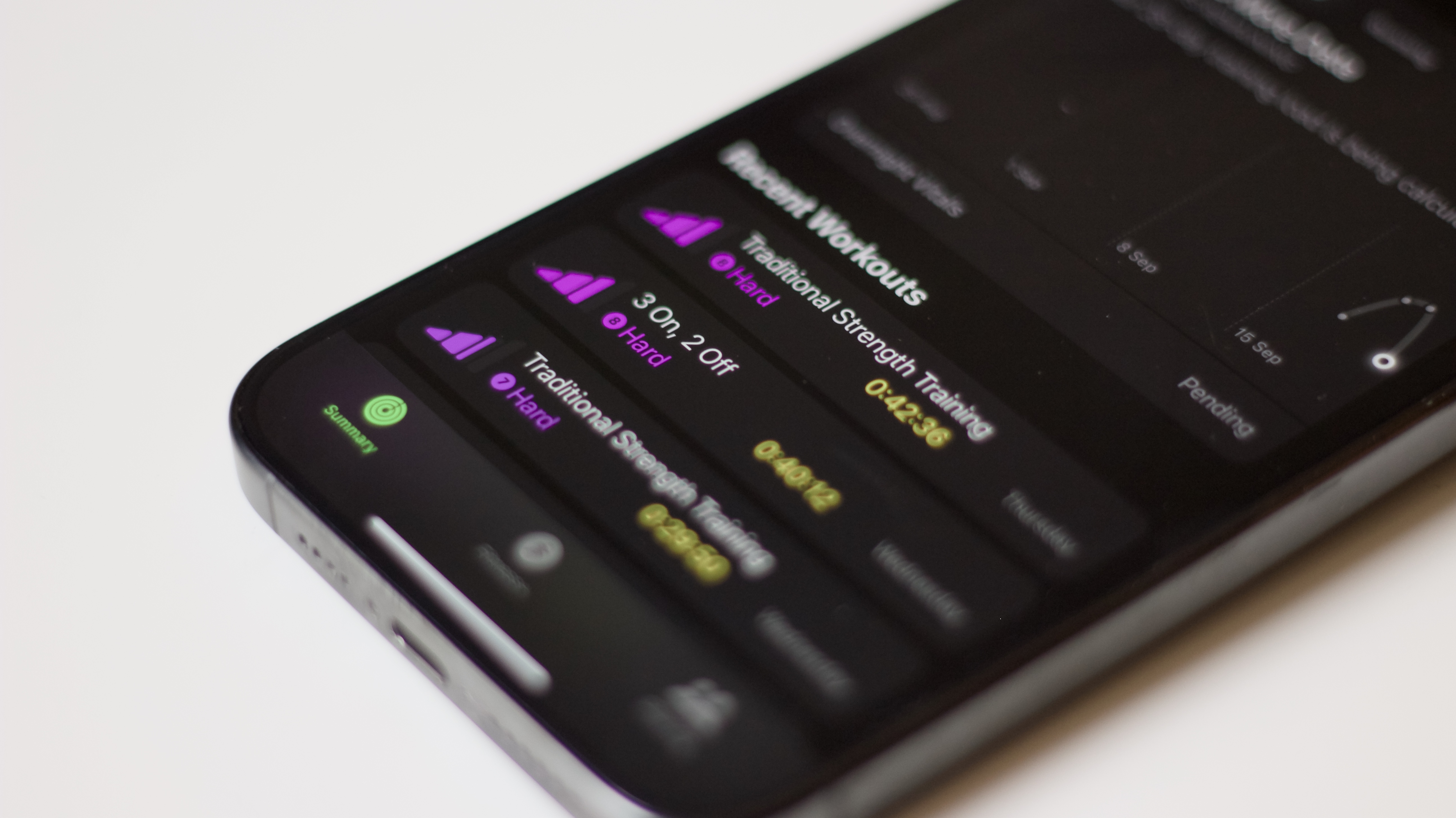
PUSH has more to offer. It’s got a great library of exercises that help me plan around a busy gym or lack of equipment. Its plethora of peer-reviewed source material is well presented and makes for an interesting read, and its daily insights tell me which muscles I’m growing and which might be stalling, another fabulous motivator. It’s not a perfect app and it won’t work for everyone, but after 12 months in my pocket, it’s become an indispensable training partner.
You may also like
- ‘Walking is one of the most important things we can do for our long-term health’ – trainer shares three of her favorite lunch break walking workouts to try
- Five of the best free workout plans for beginners
- A top fitness coach shares his favorite 20-minute kettlebell workout for building full-body strength and muscle

Stephen Warwick is TechRadar's Fitness & Wearables writer with nearly a decade of experience covering technology, including five years as the News Editor of iMore. He's a keen fitness enthusiast and is never far from the local gym, Apple Watch at the ready, to record his latest workout. Stephen has experience writing about every facet of technology including products, services, hardware, and software. He's covered breaking news and developing stories regarding supply chains, patents and litigation, competition, politics and lobbying, the environment, and more. He's conducted interviews with industry experts in a range of fields including finance, litigation, security, and more. Outside of work, he's a massive tech and history buff with a passion for Rome Total War, reading, and music.